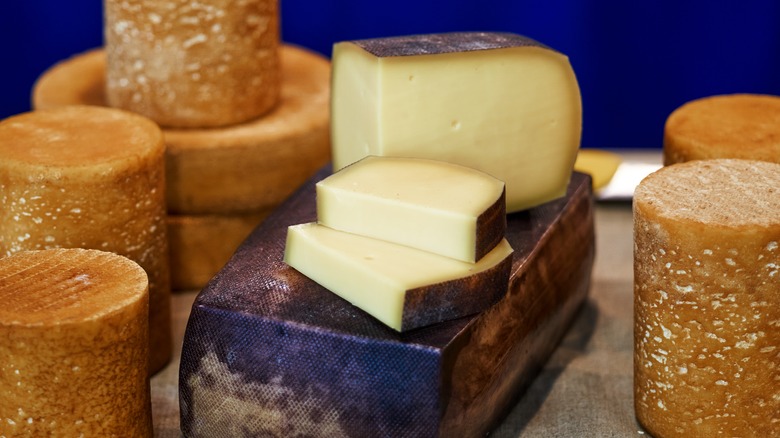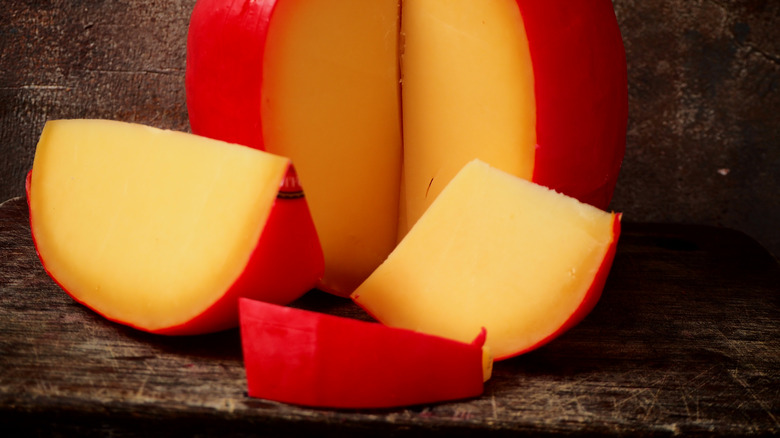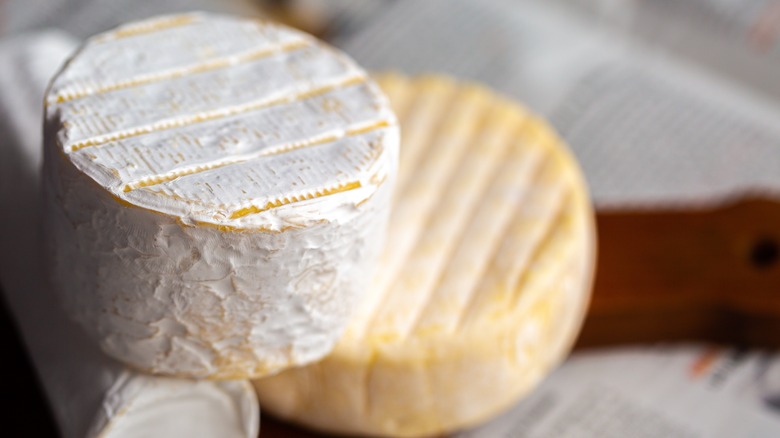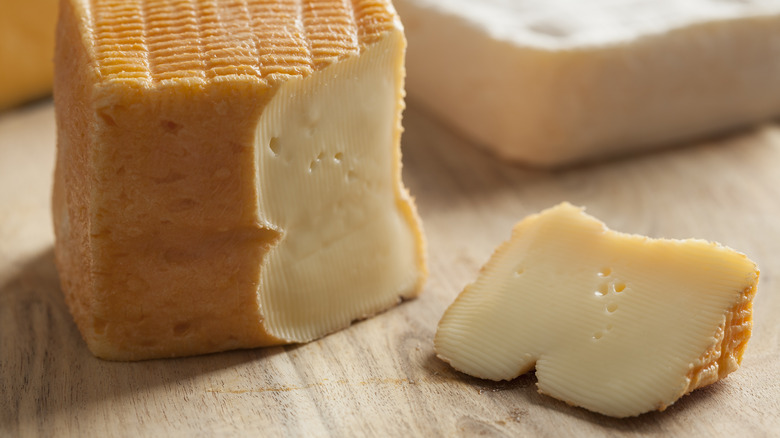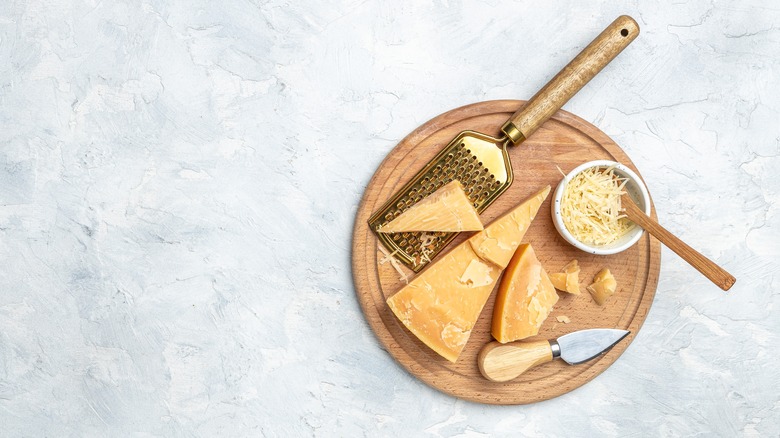Here's The Difference Between The 4 Types Of Cheese Rinds
Cheese is the centerpiece of many beloved dishes, from queso fundido to palak paneer to classic cheese fondue, but it's not often that we think about its unique creation process. The cheese-making process begins with intentionally curdling milk using rennet, which is an enzyme that stimulates the coagulation process in the milk, per Shelburne Farms.
According to The Washington Post, once the milk has curdled, it separates into two forms known as curds and whey. The whey is taken elsewhere, sometimes reduced to a powder form, and the curds are left to be heated and eventually pressed into blocks of cheese. The cheese is either sold fresh, like goat cheese or feta, or it is set to dry out which is also known as the aging process. During this time, a layer of skin on the outside of the cheese turns into a rind (via MasterClass). The type of rind that forms is completely dependent on several factors, including the environment in which the cheese dries out, as well as the variety of cheese.
Depending on those factors, one of the four types of cheese rinds will be added to or form on the cheese: inedible, bloomy, washed, or natural. Before you dive into your next cheese plate, it's helpful to know the different purposes and flavor profiles of each of these rinds.
Inedible rinds should be removed before eating
Inedible rinds are exactly what the name entails: rinds that are meant to be removed before enjoying the cheese. Wisconsin Cheese compares inedible rinds to wrapping paper, which you typically rip away and discard so you can enjoy your gift: the cheese. Typically, these rinds are made of inedible external material and are placed on the cheese during the aging process, including bandaged-wrapped rinds and wax rinds.
Bandaged-wrapped rinds are simply pieces of cloth that produce a drier cheese consistency and are typically found on aged cheddar cheeses. The cloth not only changes the texture of the cheese but seals in the nuanced flavor that you don't get from young cheddar. On the opposite end of things, wax rinds are used to seal in moisture and are typically found on softer cheeses, like the bite-size Babybel cheese you've likely seen or purchased in the grocery store.
Bloomy rinds add an earthy flavor
Unlike inedible rinds, bloomy rinds are consumable and are formed when edible mold spores are sprayed onto the exterior of the cheese (via Spruce Eats). Usually, mold growth is considered a negative thing, but not when it comes to cheese. Cheesemakers facilitate mold growth by cranking up the humidity in the room where the cheese is stored in order to form this type of rind. This creates an environment similar to the cellars in Normandy, France, where bloomy rinds were first created, per Cheese Grotto.
The resulting rind is typically white in color, soft in texture, and has an earthy flavor, per Food & Wine. Bloomy rinds not only impart their own flavor onto the cheese but create a softer, creamier texture on the inside. Some examples of cheese with a bloomy rind include the ever-popular brie and Camembert, which you can easily find at your local grocery store (per Cheese Grotto).
Washed rinds seal in bold flavors
Washed rinds are created when a brine or alcohol solution is applied to the exterior of the cheese, which creates a productive environment for bacteria growth (per MasterClass). You can recognize a cheese with a washed rind by its lighter orangish-red color and because of the brine solution, the rind will taste tangy and/or salty. According to Tom Bivins, former executive director of the Vermont Cheese Council, in addition to salt, the brine may be flavored "with all kinds of things, including cider, cognac, beer, and wine," (via Food & Wine).
Because of the brine's strong flavors, cheeses with washed rinds are more potent compared to those with other types of rinds, according to Spruce Eats. If you're looking to add these bold flavors to your next cheese and charcuterie board, look for Munster, Gruyère, taleggio, or Limburger cheese at the grocery store or a local specialty cheese shop (via MasterClass).
Natural rinds are found on firmer cheeses
Natural rinds, as you might expect, form on their own when the air around the cheese naturally dries it out. More specifically, the salt within the cheese pushes moisture to the surface, which then evaporates and leaves behind a tough exterior (via MasterClass). This process is less involved than other methods of aging cheese, but the cheesemongers will occasionally dampen the outer layer with water, salt, or oil. They also flip the wheels weekly to ensure consistent aging, according to Cheese Grotto.
The inside of cheeses with natural rinds will typically be firmer, and examples include Parmigiano-Reggiano, French-style tommes, as well as Stilton, according to Spruce Eats. While natural rinds are technically edible, due to their thickness, you may want to leave them be. You shouldn't throw away your parmesan cheese rinds, though, because they can be tossed into sauces or soups to add umami and a hint of saltiness, per Food Hacks.
